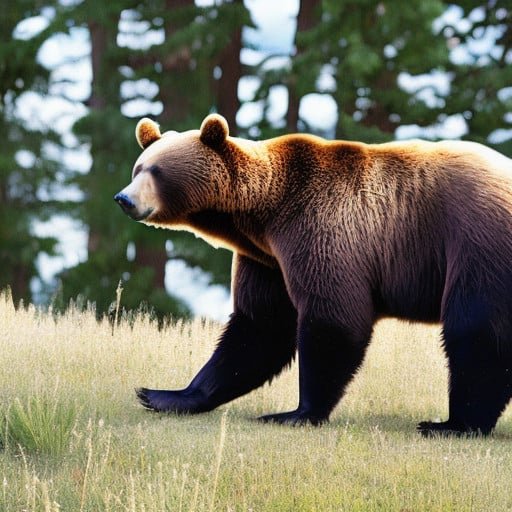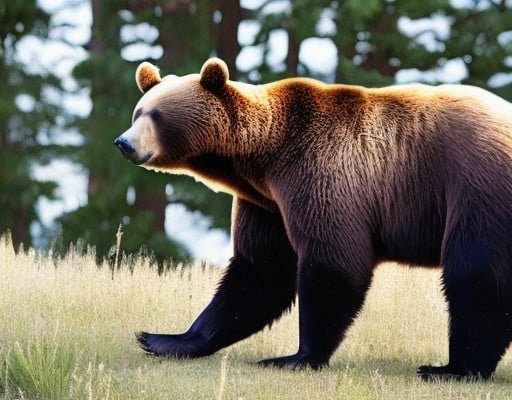
Whether it’s in Native American legends or classic fairy tales, bears play a prominent role. They often symbolize survival and resilience, qualities that resonate deeply with many people. This article will take you on a journey through various cultures, exploring how bears are depicted and what they represent. You’ll find tales that inspire and educate, giving us a glimpse into how generations have viewed these magnificent creatures.
The Bear in Native American Folklore
In Native American culture, the bear has a revered status. It’s often seen as a spiritual guide or a protector. Many tribes, such as the Lakota and Algonquin, incorporate bears into their oral traditions and rituals. For them, the bear embodies strength, courage, and wisdom. It’s no surprise that they sometimes invoke the bear spirit for protection during challenging times.
Take, for instance, the well-known Bear Dance among the Ute Tribe. This dance not only celebrates the bear’s strength but also acts as a tribute to the animal. The bear is believed to possess healing powers, making it central to many healing ceremonies. Here’s the thing: the connection runs deeper than mere symbolism; it’s about respect and the recognition of the bear’s place in the ecosystem.
Moreover, stories featuring bears often teach important life lessons. A common narrative tells of a bear who helps humans learn how to survive in the wilderness. This interplay between humans and bears emphasizes the value of coexistence and understanding our natural world—a theme that resonates even today.
Bears in European Folklore
Across Europe, bears carry various meanings and appear in countless folktales. In many cultures, they represent strength and ferocity. For instance, in Scandinavian mythology, bears are often associated with gods and warriors. Vikings would often consider the bear a symbol of power, and some even wore bear skins in battle, believing this would transfer the animal’s strength to them.
A standout tale is the story of “Goldilocks and the Three Bears.” Here, bears are portrayed in a more domestic light, presenting a contrast to the fierce warrior image. This story plays with themes of curiosity and respect for nature. Who could forget that charming family dynamic? It’s fascinating how this tale paints bears as somewhat relatable, with personalities and emotions.
Additionally, the bear is a common motif in heraldry. In numerous European coats of arms, the bear symbolizes bravery and strength. By featuring bears prominently, families and regions aimed to convey their valor and importance. Through these depictions, the bear becomes not just a creature of the forest but a significant cultural emblem.
The Bear in Asian Cultures
In Asia, bears have a rich tapestry of representations in folklore and mythology. For example, in Japanese mythology, the bear is often seen as a divine creature. In ancient times, some tribes worshiped bears as gods, believing that they embodied the spirit of the mountains. They were often associated with agriculture and were believed to bring good fortune.
Folktales frequently depict bears as wise and powerful beings. For instance, in Korean folklore, the story of a bear who transforms into a woman after eating garlic and mugwort reflects themes of perseverance and transformation. This tale not only highlights the respect for bears but also illustrates the interconnectedness of human and animal spirits in Asian cultures.
Furthermore, in China, the bear is often seen in traditional art and medicine, symbolizing strength and health. The Giant Panda, in particular, is revered and promoted globally as a symbol of wildlife conservation—showcasing society’s evolving relationship with these majestic creatures.
Bears in Modern Media
In today’s media, bears continue to capture our imagination and hearts. From animated characters to blockbuster movies, bears are often depicted in ways that create both laughter and reflection. Think about characters like Winnie-the-Pooh or Baloo from “The Jungle Book.” They’re portrayed as friendly, lovable figures, making bears seem approachable and endearing.
But it’s not just the cute and cuddly side that we see. Films like “The Revenant” showcase the bear as a symbol of danger and raw, untamed nature. These portrayals can remind us how complex our relationship with wildlife can be—advancing the conversation about respect and coexistence in a world where nature is constantly changing due to human influence.
Moreover, documentaries that focus on wildlife have brought a new appreciation for bears. By highlighting their behaviors and habitats, these films encourage us to think deeply about conservation and our responsibility to protect these magnificent creatures and their environments.
Bear Symbolism and Spirituality
When it comes to symbolism, bears represent much more than strength and bravery. They also embody qualities like introspection and healing. In many cultures, dreaming about a bear can signify a need to address personal struggles or find strength in difficult situations. This idea reminds us that bears are not just physical beings; they carry significant symbolic weight that can inspire personal growth.
The bear’s hibernation cycle also plays a role in its symbolism. As they retreat into their dens and emerge rejuvenated, they symbolize the importance of rest and reflection. This concept resonates with many people, reminding us of the need to take time for ourselves.
Additionally, many spiritual practices incorporate the bear as a totem or spirit animal. People who identify with the bear may see it as a source of strength or guidance on their life journey. This connection reflects a deep understanding of the bear’s role in nature and its ability to teach us about resilience, courage, and self-care.
So, when we explore how the bear is represented in culture and folklore, we’re uncovering layers of meaning that stretch across time and geography. These powerful creatures have taken on various roles, from protectors and teachers to symbols of strength and resilience. They remind us of our connection to nature and the importance of respecting the wild.
From Native American legends to modern films, the bear continues to inspire and evoke curiosity. As we share these stories and representations, we contribute to an ongoing narrative that celebrates the magnificence of bears—a narrative that invites us to reflect on our own lives and the natural world around us. So next time you encounter a bear in a movie or a story, remember the rich tapestry of culture and meaning woven around this incredible animal.

